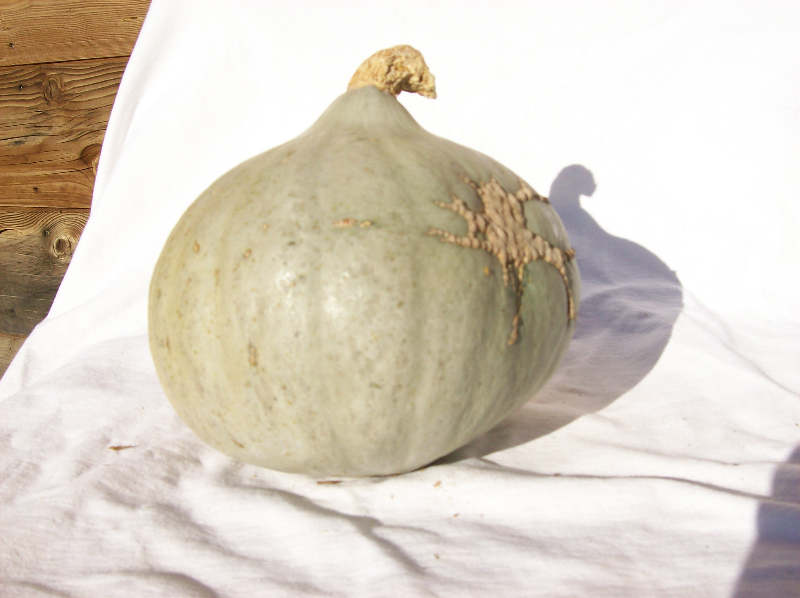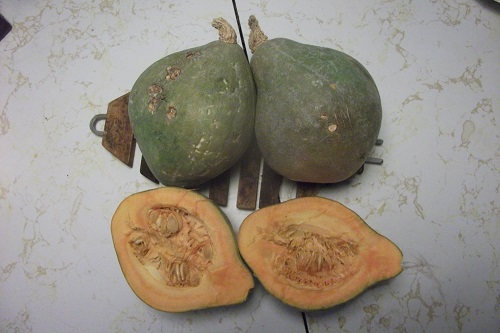 MBZ
MBZ

|
|
|
|
|
| ||||

The Blue Ballet Squash is a much smaller version of the Blue Hubbard. The Blue Ballet produces tear drop shaped squashes that can weigh between 1-2.7kg (2˝-6 lbs) each. You can expect to get 3-4 squashes per plant. The Blue Ballet plant is considered a semi bush, but can produce vines that are 1.8-3.0m (6-9’) long. Plant height ranges from 30-50 cm (12-20”) tall. This squash is smoothed skinned, blue gray in colour, turning an off yellow when fully mature or aged.
Smaller and more marketable Blue Hubbard average 4–6 lb, two per plant. Smooth blue-gray skin with sweeter orange fiberless flesh.
Hubbards are all full-flavoured, sweet, usually moist and ‘buttery’ in texture. Some varieties are a bit drier (e.g. blue/grey hubbard) and some are moister (e.g. green hubbard, and all the orange ones). The original variety of Hubbard squash is native to South America. The Hubbard squash is thought to have been grown in New England since the 1830's and sold commercially since 1909.


